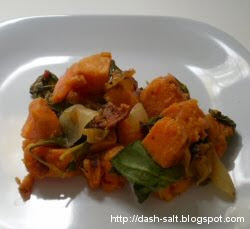My family lived in Bangkok when I was young (6th and 7th grades) and, as you can imagine, the food was fabulous. What I miss the most about the food in Thailand is the fruit. Amazing, weird, delicious fruits that you just don’t find here. In the past decade or so, American supermarkets have really evolved and I can now get the most amazing imported items. And even there many “exotic” fruits and vegetables are now available in my neighborhood store, these, for the most part, remain out of reach.
Every once in a great while, I do see a couple of sad, dried out
lychees for sale in the grocery store. I am never tempted. If you’ve enjoyed the flavor and texture of fresh, crisp apples, would you buy a brown, bruised one even if that was the only one available? The flavor of a fresh lychee is sweet and slightly fragrant. I remember eating a dessert in Thailand consisting of lychee halves served in a simple syrup that was simply delicious.
I’m going to sidetrack for a moment and talk about a fruit that, quite frankly, I’m happy is not stocked at my local Stop & Shop:
durian. It’s beloved in Southeast Asia but I have never tried it and there’s a very good reason for that: it stinks. Durian is renown for its pungent odor which, to me, smells like rotting organic matter. I simply cannot get it past my nose. We once took a trip to the Malaysian highlands. We were in a taxi driving up a twisty mountain road and we were behind a truck full of durians. Since we couldn’t pass, we were stuck. I have a slight phobia about driving on twisty mountain roads to begin with; adding the smell of durian made for an excruciating trek.
You can sometimes get
pomelo here on rare occasions and it is just as I remember it. It’s similar to a grapefruit but the skin is much thicker and you eat in sections like an orange. The flavor is a little sweet and a little tart, but not quite as sour as grapefruit. It’s wonderful on a hot Southeast Asian day. But then, that’s true about all these fruits.
The
mangosteen is an odd little fruit. It has a thick, purple rind and is capped with a green stem and leaves that remind me of artichoke leaves. At the bottom of the fruit, there’s a little piece at the bottom (I don’t know what it’s called) that looks like a flower. The fruit inside looks rather like a clove of garlic and the white flesh (which houses big, brown seeds) have a sweet, mild flavor.
My absolute all-time favorite Thai fruit is
rambutan. The size of an egg, it has a red skin and is covered with long, soft, green spines. It’s a very funny looking fruit. Oh but the taste. The translucent white flesh is juicy and sweet and sublime. If I could pick just one of these fruits to have available to me in the U.S., this would be it.
 Cream of Spinach Soup (6 servings)
Cream of Spinach Soup (6 servings)











 Pasta Puttanesca (serves 6)
Pasta Puttanesca (serves 6) Crab Corn Chowder (serves 6 to 8)
Crab Corn Chowder (serves 6 to 8)











 Asparagus Pancetta Risotto (6 servings)
Asparagus Pancetta Risotto (6 servings)  Curried Potato and Spinach Soup (6 servings)
Curried Potato and Spinach Soup (6 servings)



 Pumpkin-Crusted Chicken (6 servings)
Pumpkin-Crusted Chicken (6 servings)  Nigella-Tarragon Rice Pilaf (6 servings)
Nigella-Tarragon Rice Pilaf (6 servings) 

 Brown Rice Pilaf with Celery Seed and Garlic (6 servings)
Brown Rice Pilaf with Celery Seed and Garlic (6 servings)




